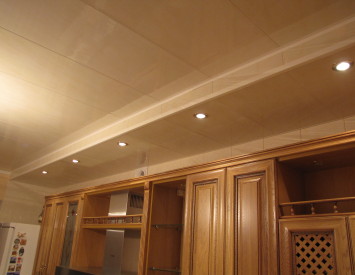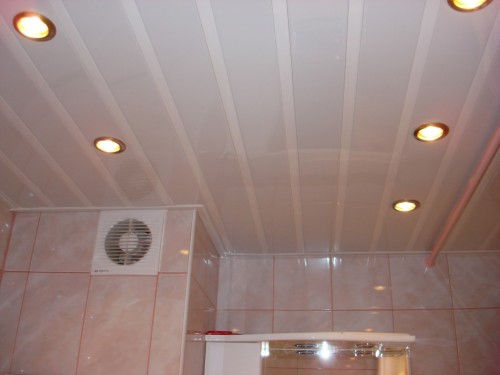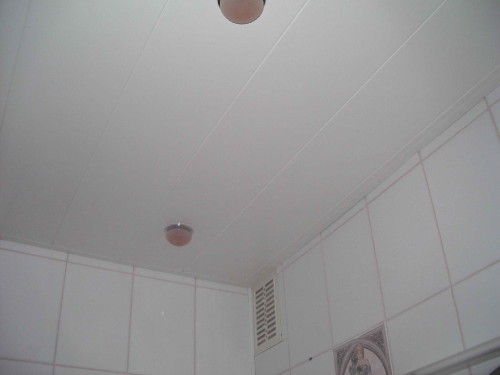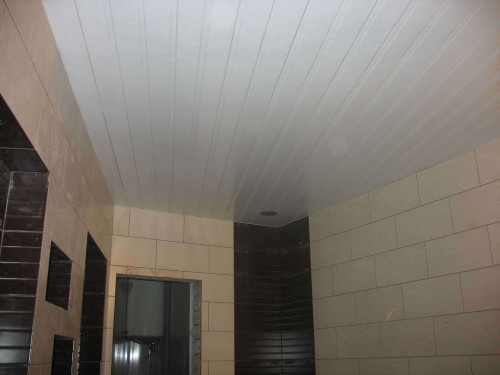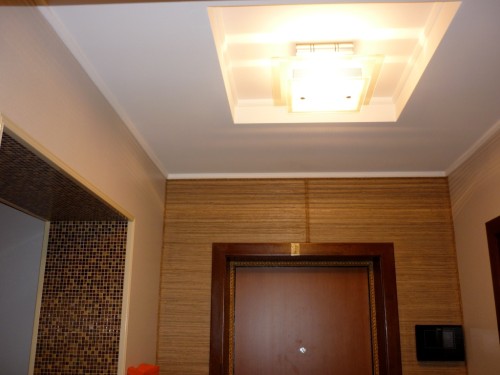Today, finishing materials are constantly improving, not only externally, but also in terms of characteristics. For a certain amount, you can find finishing products that will not have a single drawback. Previously, the owners who want to transform their home a little, come to make a choice between beautiful material and high -quality (or safe).
Now there is nothing of the kind, everything is limited to the price issue. However, recently, it is often possible to find products that are in the best way to correspond to price and quality.
In this material we will talk about plastic products that are used for ceilings. Despite the fact that many people still continue to glue the ceilings with classic wallpaper, such decisions gradually go into the past. Now in construction stores you can find hundreds of options for plastic panels for the ceiling. Of course, they differ in properties, appearance and price.
Content
The main features of plastic panels for ceilings
Most often, plastic panels are available as PVC. Given that the basis of these products is plastic, manufacturers have the opportunity to create a wide variety of designer compositions. The only important requirement for PVC panels is the creation of a drawing that would be perfect for the home.
Plastic panels for the ceiling can have a glossy, matte surfaces, or an original base that will resemble wood or stone.
Many can say that plastic panels for the ceiling are almost the same as wall panels. In fact, these are similar products, however, the panels for the ceiling have light weight, unlike the material for walls. Accordingly, this allows you to fix the material to the ceiling without any problems and significant restrictions.
Surely the main advantage of plastic panels is the fact that they will allow you to create the surface of the ceiling perfectly even, even if the ceiling itself has serious flaws. Obviously, ordinary wallpapers do not have such an advantage. As for other positive aspects of PVC, which are similar to other plastic materials, they include durability, plasticity, sound insulation, as well as moisture resistance.
Of course, the properties of certain plastic panels depend on a particular manufacturer. Some of them save on important components, which, in turn, makes the material somewhat limited in use. However, in most cases, plastic panels are really high -quality material, and every year the products of this direction are becoming more and more perfect.
If we talk about the disadvantages of PVC panels, then it is necessary to focus on their fragility. Accordingly, any manipulations with the material must be carried out carefully. If the panel cracked during the repair process, or any other flaw appeared, it is better to get rid of a specific fragment of products and replace it with a new one.
Acquisition of material
As for the dimensions of the material from which you should be repulsed during the purchase, you need to know that the thickness of plastic panels often ranges from 5 mm to 10 mm. Width - from 20 mm to 50 mm. The length of the panels is often limited to three meters. Often you can find other products, the length of which can be 2.5 m.
For the installation of plastic panels, we will also need a metal profile, which will be placed over the entire area of \u200b\u200bthe ceiling. Strong profiles are also needed, they will need to be placed around the perimeter of the surface.
Do not forget about fasteners that will be used in the process very often. Of course, at the end of the repair work, it will be necessary to install a ceiling skirting board, which will successfully hide all the flaws that appeared during the installation of the panels.
We also need the following tools:
- drill;
- screwdriver;
- knife;
- scissors;
- liquid nails.
Creating a plastic ceiling
The main process of creating a ceiling from plastic panels begins with fastening of hard profiles. The metal structure should be horizontal and durable. In order not to get into an unpleasant situation, you need to use the construction level, which will not allow you to fix the profiles not at that angle. The fastening of all the element of the frame is based on transverse profiles using self -tapping screws.
Next, another profile is mounted around the perimeter of the ceiling, which will correspond to the overall thickness of the metal structure.
Using a hacksaw, it is necessary to cut the panels so that they correspond to the area of \u200b\u200bthe ceiling. Obviously, in some cases, products may be too long or wide. This should not prevent us from creating high -quality plastic ceiling. The mounting of the panels to metal profiles will occur through the use of liquid nails. And here you need to ensure that the surface of the plastic ceiling is perfectly horizontal. It is not worth applying too much glue to the surface of the material, since usually liquid nails perfectly hold the building material even if it has a large weight.
Particular attention should be paid to the last panel, which will be installed in the very edge of the ceiling. Obviously, to accommodate, you will probably need to cut it a little in width. Accordingly, this panel also needs to be tightly placed.
The ceiling skirting boards that are used in this process are the most ordinary building elements that glue to the wall and ceiling after the adhesive of the wallpaper. In this case, the skirting boards will be easier to fix, since the metal frame allows you to create an even surface. Again, ceiling skirting boards are attached with liquid nails. Using a rag, you should get rid of the remaining glue, which can ruin the appearance of plastic panels.
Throughout the process, you need to use the building level to check the horizontal surface. If the metal structure is not fixed very well, over time it can simply collapse.
